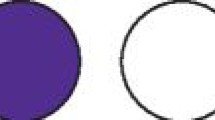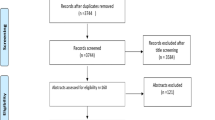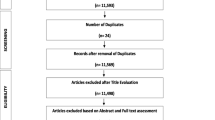Abstract
Data sources
Studies were sourced using Biomed Central, Cochrane Oral Health Reviews, the Cochrane Library, Directory of Open Access Journals, Expanded ASAP Plus, the MetaRegister of Controlled Trials (www.controlled-trials.com/), Medline (PubMed) Science-Direct, Research Findings Electronic Register, and BBO/LILACS.
Study selection
Clinical trials and systematic reviews relevant to the review objective published in English, German, Portuguese or Spanish were included after independent review by two reviewers; disagreements were resolved by discussion and consensus.
Data extraction and synthesis
Data extraction and quality assessment was undertaken independently in duplicate by two reviewers. The outcome measure for the caries preventive effect was caries-absence on sealed teeth. A meta-analysis was conducted.
Results
Out of 25 selected studies, 11 met the inclusion criteria (eight were trials and three were systematic reviews) with six of these being included in a meta-analysis. The pooled odds ratio was 0.96 (95% confidence interval, 0.62–1.49), indicating no difference in the caries-preventive effect of glass ionomer cements (GIC) and resin-based fissure sealant material.
Conclusions
GIC and resin-based sealants exhibited significant caries-preventive effects. This review found no evidence that either material was superior to the other in the prevention of caries. Therefore both materials appear to be equally suitable as fissure sealant materials.
Similar content being viewed by others
Commentary
Paradoxically, sealant guidelines based on systematic reviews offer recommendations based on the surrogate outcome measure ‘retention’, not the primary outcome variable of import, namely caries prevention.1, 2, 3 The resident concept is that if sealants remain in place, they are protective.
This review by Yengopal et al. directly examines the primary outcome variable, caries prevention, and determines that both resin and glass ionomers provide equal protection against caries. The importance of this finding is critical for sealant programmes, particularly for those that are school-based, where lighting, saliva control, patient compliance and patient followup are not optimal. Glass, when compared with resin, has several unique characteristics that recommend it. First, glass, but not resin, is moisture-forgiving (resin requires an absolutely dry field, whereas glass does not). Second, glass contains and slowly releases fluoride, providing additional caries prevention. Third, glass, being less viscous, flows more deeply into pits and fissures, providing protection even as abrasion wears away the occlusal surface. Thus, although glass may not be easily visible, when compared with resin, it can still be very effective.
The Yengopal review highlights the critical need for guidelines, and the systematic reviews they are based upon, to focus on primary outcome variables. With a focus on the primary outcome variables, transitions from “historical evidence” to the current “best evidence” will be explicit. With this information, all stakeholders can more easily make informed decisions.
In contrast, the reliance on ‘common-sense’ surrogate measures can misdirect care. A classic, and very sad example, is the recommendation that infants be placed on their stomachs to sleep. The common-sense rationale was that if infants spit up they would continue to be able to breathe. In marked contrast, the current recommendation, is “back to sleep” (placing infants on their backs) to prevent crib death.4
A reliance on traditional rationales for care places the profession at risk of misdirecting care. With this study as a potential starting point, my sense is that we will now see a 10-year change in recommendations away from resin and toward glass for sealant programs.
References
Beauchamp J, Caufield PW, Crall JJ, et al. Evidence-based clinical recommendations for the use of pit-and-fissure sealants: a report of the American Dental Association Council on Scientific Affairs. J Am Dent Assoc 2008; 139: 257–268.
Gooch BF, Griffin SO, Gray SK, et al. Preventing dental caries through school-based sealant programs: updated recommendations and reviews of evidence. J Am Dent Assoc 2009; 140: 1356–1365.
Griffin SO, Oong E, Kohn W, et al. The effectiveness of sealants in managing caries lesions. J Dent Res 2008; 87: 169–174.
Gilbert R, Salanti G, Harden M, See S . Infant sleeping position and the sudden infant death syndrome: systematic review of observational studies and historical review of recommendations from 1940 to 2002. Int J Epidemiol 2005; 34: 874–887.
Author information
Authors and Affiliations
Additional information
Address for correspondence: Dr S Mickenautsch, Division of Public Oral Health, University of the Witwatersrand – Johannesburg, Houghton, South Africa. E-mail neem@global.co.za
Yengopal V, Mickenautsch S, Bezerra AC, Leal SC. Caries-preventive effect of glass ionomer and resin-based fissure sealants on permanent teeth: a metaanalysis. J Oral Sci 2009; 51: 373–382
Rights and permissions
About this article
Cite this article
Niederman, R. Glass ionomer and resin-based fissure sealants – equally effective?. Evid Based Dent 11, 10 (2010). https://doi.org/10.1038/sj.ebd.6400700
Published:
Issue Date:
DOI: https://doi.org/10.1038/sj.ebd.6400700



